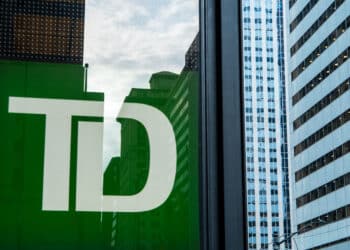How Small Can Branches Get and Still Be Effective?
 Wells Fargo, known for its methodical rollout of innovations, is testing a new branch in Washington, D.C. The branch — or neighborhood store, as the bank refers to it — is just 1,000 square feet, while the traditional branch location is 3,000 square feet.
Wells Fargo, known for its methodical rollout of innovations, is testing a new branch in Washington, D.C. The branch — or neighborhood store, as the bank refers to it — is just 1,000 square feet, while the traditional branch location is 3,000 square feet.
The branch is not much larger than your average ATM lobby. Is that the future of the branch — an ATM lobby with nothing behind it? How small can branches get and still adequately serve customers?
“This store, with its small footprint, is suited to an urban location,” said Jonathan Velline, head of ATM banking and store strategy. “Tight spaces led us to think differently.”
And the branch is very different. It is a small, flexible space with countertop locations containing a new kind of ATM machine where employees — “team members” in Wells’s parlance — can assist with customer transactions. This orientation means nothing is out of a customer’s view, and the customer and employee work out transactions together on the machine. In other words, this is a shift from full-service to mediated self-service. It may be the case, of course, that the customer needs no assistance at all.
“The store operates with a paperless workflow,” Velline said, pointing to the touchscreen ATMs that offer, as do all of Wells Fargo’s ATMs, emailed receipts. “Much of the space in a traditional branch is devoted to file storage,” Velline added.
The ATMs are NCR units, and NCR is experimenting heavily with video banking. Perhaps in future, if a specialist is needed, video banking will be used to contact another banker, but the screens are not currently set up to perform video functions. The ATM will dispense $1 bills, $5 bills, and $100 bills in addition to the usual $20.
“These ATMs contain the only cash in the store,” Velline said.
Other Wells Fargo team members are equipped with tablets — the bank is going with Microsoft Surface tablets — and can engage with customers in small semi-private seating areas. They don’t look all that private as you can see in the image above. More traditional offices are located at the rear of the store.
Messages will be broadcast into the branch via digital signage. One signs faces the street, while three others face the lobby. The messages, Velline said, are assembled by a central team, but can be targeted to specific locations, usually at a regional level.
The store has begun operation with five team members, but Velline emphasized the bank will monitor transaction volumes to find the optimal number. The team members’ input was crucial to the development of the smaller branch, Velline said. While it is becoming easier to picture branches with no employees at all, it is true that specialized brashness demand special employees. The team members in the micro-branch, for example, must be more outgoing to engage customers increasingly used to serving themselves.
At night, most of the branch converts into an ATM lobby. The NCR machines will remain, but the employees and tablet computers will be gone.
A larger (3,000 square feet) branch is located approximately one mile away. This branch can handle more in-depth transactions. This traditional branch will continue to handle business accounts, for example, as the smaller location is meant just for personal banking customers. This makes good sense, as business customers typically handle many more checks and bills than personal customers, and typically need more frequent interaction with bankers.
So we could see a larger, traditional branch for business customers and more complex personal interactions, surrounded by multiple satellites that are closer to being branches this one.
Will this new branch bring in customers? Will the mediated service model prove superior for personal banking customers? The writing seems to be on the wall that the “branch of the future” will be very small indeed with no employees at all.
In-branch transactions continue to decline, and banking guru Brett King has pointed out that banks overestimate the revenue branches bring in. If a customer selects a product online but is forced to come to the branch to sign the paperwork, where should the revenue go on the balance sheet? King says this is why the online and mobile channels incorrectly seem to generate only “leads” and not actual business.
Wells Fargo’s CEO John Stumpf was asked about the new micro-branch on the bank’s recent earnings call. How many of Wells’ 6,000 branches can we expect to go this route?, he was asked. Stumpf replied, “We don’t have a plan per se that says so many of the neighborhood versus so many of traditional. But they all work, because even our millennial customers who are much more skewed towards self-service and mobile devices still want and need stores. And in some places, you can’t get a 3,000 or 4,000 square foot space, where 1,000 square feet works just as well, in fact, better. And so look for us to do more. It’s a test and learn kind of mode. And it’s going to help us grow and deepen the relationships.”
How much space do you need to deepen the relationship with the customer?














